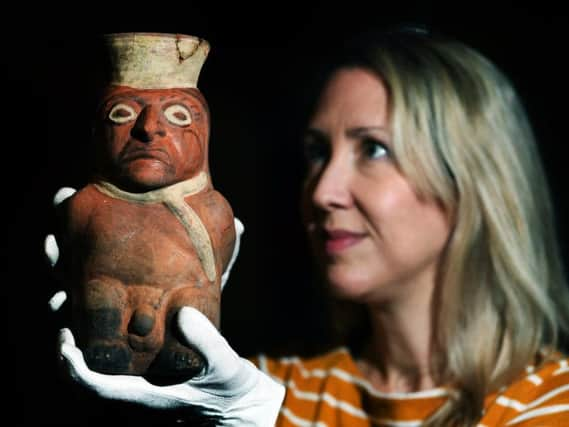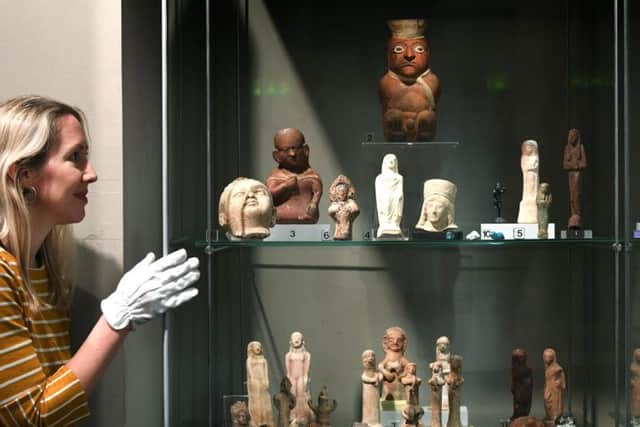Face to face with history in new exhibition at Leeds City Museum


The new display case at Leeds City Museum includes almost 40 intricately carved statues and figures from civilisations including Ancient Egypt, Peru, Greece, Rome and Mexico and a tradition that started more than 40,000 years ago.
Among the pieces on display are a group of figurines recovered from a tomb in Cyprus depicting musicians playing tambourines and making offerings from around 700 BC, a Roman woman draped in cloth dating from around AD 50 and figures of Tanit, the goddess of Carthage and Pan, Greek god of nature and rustic music from 200-300 BC as well as a head of Bhudda from India.
Advertisement
Hide AdAdvertisement
Hide AdKatherine Baxter, Leeds Museums and Galleries’ curator of archaeology, said the figures tell us a lot about how ancient cultures viewed both themselves and the world they lived in.


She said: “Throughout human history, we know that people from different cultures and civilisations on virtually every continent have shared this creative impulse to make figures representing themselves and the people they saw around them.
“Sometimes these figures were used in rituals or religious practices, but they were also a way for the makers to express themselves and capture their impression of world they lived in. “That desire to interpret the world through people is a common thread which links us to our ancient ancestors and which can still see today in everything from portraits and sculpture, to photography and social media."
The oldest known sculpture of a human being, known as the Venus of Hohle Fels, was carved out of mammoth ivory about 40,000 years ago and is housed at the Prehistoric Museum of Blaubeuren in Germany.
Advertisement
Hide AdAdvertisement
Hide AdFaces from the Past can be found in Leeds City Museum’s Ancient Worlds Gallery, which is also home to a spectacular array of relics from ancient civilisations including the 3,000 year-old remains of Nesyamun an Egyptian mummy.